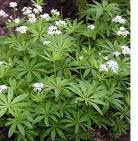The squirting cucumber is native to Europe and cultivated in Britain North Africa and western Asia and it has been introduced to the US Alabama
"The little Mediterranean squirting cucumber, as it ripens, fills with a slimy juice. Eventually, the pressure within becomes so great that the cucumber bursts off its stalk and shoots through the air for as far as twenty feet. Behind it, streaming from the hole in its base like gases flaring behind a space rocket, comes a trail of slime and with it, seeds." (Attenborough, D. 1995)
An amusing plant for a garden!
 In the ancient world the plant was used as an abortifacient, although you would have had to be desperate to use it as it can be fatal. It is highly toxic and should not be used in home remedies.
In the ancient world the plant was used as an abortifacient, although you would have had to be desperate to use it as it can be fatal. It is highly toxic and should not be used in home remedies. Hippocrates, the Father of Medicine used this plant as a laxative, and given the description of its action it is akin to jamalgota and more dangerous to use. Writing in is Materia De Medica in the 1st century A.D., Dioscorides says that it was used for treating gout, toothache, sciatica and oedema. It has a diuretic effect, although it would be much safer to use other plants with diuretic properties.
 It gets its botanical name from the Greek, elatos meaning to drive or strike and ekballein, to cast out, which is pretty descriptive of its action. It is a member of the Cucrbitaceae family, which makes it a relation of the cucumber, courgette and pumpkin.
It gets its botanical name from the Greek, elatos meaning to drive or strike and ekballein, to cast out, which is pretty descriptive of its action. It is a member of the Cucrbitaceae family, which makes it a relation of the cucumber, courgette and pumpkin. The juice has been employed in medicine in more recent times and this is collected by harvesting the squirting cucumber before it has fully matured so that it ejects its mucilage in controlled environments. This is dried and sold in flakes for inclusion in medications for sinusitis, and other ailments. It has been used in Turkey
Even small doses of this plant can be fatal, as it has a profound effect on the bowels and stomach, so please don’t try to use any part of it at home.



















